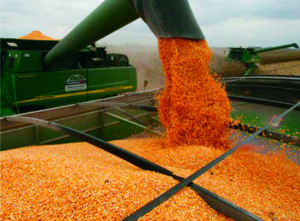 OVERVIEW
OVERVIEW
Early frost at harvest can lead to high or uneven moisture, low test weights and increased foreign material, resulting in lower-quality grain that may not store as well. Careful planning and management of drying and storage can help maintain yield when early frost hits.
WHAT YOU SHOULD KNOW
- Uneven grain moisture levels are likely after early frost, so check every load coming in from the field. Drying levels should be 15% for short-term storage, 14% for storage until spring and 13% for long-term storage. If moisture levels are extremely high, growers with livestock should consider using a portion of their acres for silage or high-moisture corn.
- The stage of development determines how to handle immature corn:
- Corn frozen in milk stage will have low yield potential, so the best option for handling may be green chopping or ensiling.
- Corn in the dough stage when frozen may have low yields and test weights, but high moisture levels. Field drydown can require 4-9 days, but ears will eventually reach an acceptable moisture level.
- Immature corn frozen in both dough and dent stages can be dried artificially using low to medium temperatures.
ACTION STEPS
- Consider drying options: Natural field drying is the best way to preserve and increase test weights. Leave corn in the field as long as losses from lodging aren’t a threat. Keep artificial drying temperatures low, because high temperatures will increase test-weight losses and kernel damage. Immature corn will require longer drying time.
- Ensure proper storage: Adequately cool and aerate grain after drying. Temperatures in the range of 20-30°F will minimize storage problems. Check bins frequently to detect potential problems early.
SUMMARY
- Early frost at harvest can result in lower-quality grain that may not store as well.
- Careful management is needed to dry corn properly to maintain as much quality as possible.
- Evaluate the best drying options and ensure proper storage.
